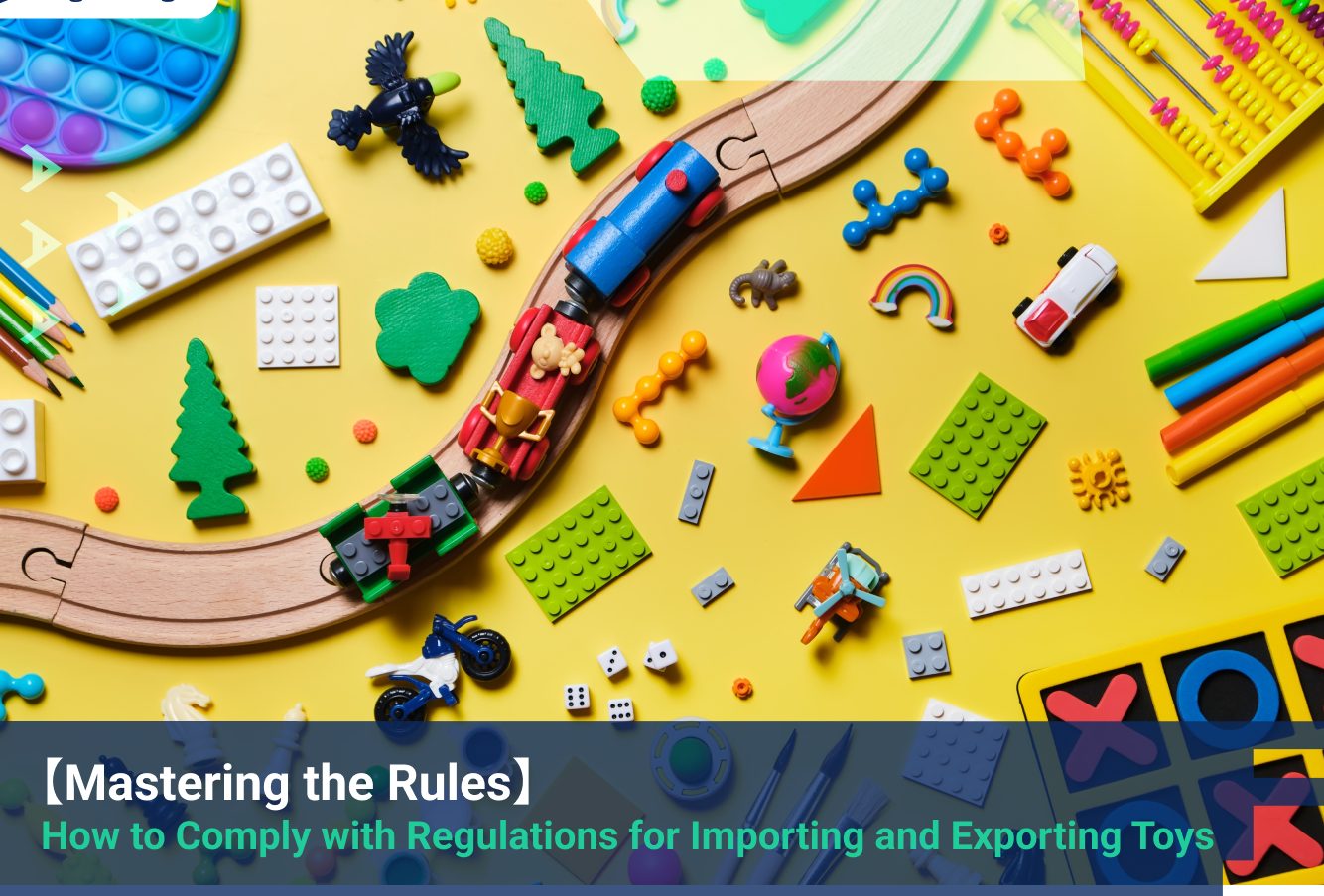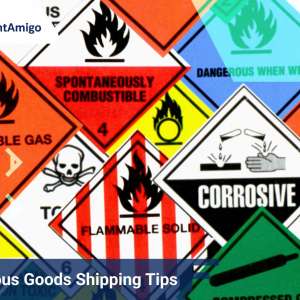The toy industry is subject to extensive regulations and compliances that govern the import and export of toys in the global economy. These regulations are in place to ensure the safety and quality of toys, particularly for children who are the end users. Compliance with these regulations is crucial not only to avoid legal issues and financial penalties but also to maintain the company’s reputation.
Importing and exporting toys requires a thorough understanding of the regulations and a commitment to ethical business practices. This includes considerations such as avoiding the use of sweatshops and child labor in toy production. Overall, compliance in the toy industry is a comprehensive process that demands knowledge, diligence, and a dedication to ethical standards.
Latest update on 12 January, 2024 by Aiden Ng– Marketing Analyst at FreightAmigo
Want to compare the best Express, Air Freight, Sea Freight, Rail Freight & Trucking rates so as to have better control on cost?
Understanding the Importance of Compliance in Toy Import and Export
Compliance in the toy import and export industry is not just a statutory requirement but also a strategic business decision. A company that ensures compliance is viewed as a responsible company, enhancing its reputation among consumers and stakeholders. This, in turn, can lead to increased sales, consumer loyalty, and long-term business success.
Compliance with regulations also safeguards the company against potential litigation. Given the sensitive nature of the toy industry where the end-users are children, any mishap due to non-compliance can lead to serious consequences. Not only can it result in hefty financial penalties, but it can also lead to a loss of consumer trust, which can be devastating for a business.
Moreover, understanding and adhering to import and export regulations can facilitate smoother business operations. It can help avoid unnecessary delays, customs hold-ups, and unexpected costs, thereby ensuring a seamless supply chain process. Therefore, compliance is an integral part of strategic business management, contributing to overall business sustainability and growth.
Introduce Different Shipping Regulations
Several shipping regulations govern the import and export of toys. Among them, the Consumer Product Safety Improvement Act (CPSIA) in the USA, the Toy Safety Directive of the European Union (EU), and the International Organization for Standardization (ISO) are significant.
The CPSIA sets the safety standards for all toys sold in the USA. It includes regulations on lead content, phthalates, and toy labeling. The EU’s Toy Safety Directive lays down the safety criteria for toys sold within the EU. It includes regulations on chemical content, mechanical and physical properties, and hygiene. The ISO, on the other hand, is a global organization that sets international standards, including safety standards for toys.
These regulations are designed to ensure the safety of the end-users, primarily children. They involve rigorous testing and certification processes to ascertain that the toys are safe for use. Non-compliance with these regulations can lead to severe penalties, product recalls, and loss of market access.
Key Regulations for Importing and Exporting Toys
Importing and exporting toys involve dealing with various regulations to ensure product safety and compliance.
- Product Safety Regulations: Both importing and exporting toys require compliance with product safety regulations specific to the country of import or export. These regulations aim to protect consumers, particularly children, from potential hazards associated with toys.
- Testing Requirements: Toys often need to undergo testing to ensure they meet safety standards. Third-party testing may be required to verify compliance with regulations related to chemical content, physical and mechanical properties, flammability, and electrical safety.
- Labeling Specifications: Regulations typically mandate specific labeling requirements for toys. This may include information such as the manufacturer’s details, batch number, production location and date, safety warnings, and age appropriateness.
- Customs Regulations: Both importing and exporting toys involve compliance with customs regulations. This includes documentation and procedures related to customs clearance, import/export declarations, and adherence to import duties and fees.
- Certification: In many cases, toys intended for import or export need to obtain certifications or conformity assessments to demonstrate compliance with the safety standards of the target market. This may involve obtaining certifications from recognized bodies or using specific marks like the CE mark in the European Union.
- Tax and Duty Regulations: Importing and exporting toys may also involve tax and duty obligations. Understanding the tax regulations of the importing and exporting countries is crucial to ensure compliance and avoid any legal issues.
Steps to Ensure Compliance When Importing and Exporting Toys
Ensuring compliance when importing and exporting toys involves various steps.
- Research Regulations: Thoroughly research and understand the regulations pertaining to toy import and export in the respective countries. This includes product safety, testing, labeling, customs, and tax regulations.
- Testing and Certification: Conduct necessary tests to ensure toy safety and compliance with regulations. This may involve third-party testing and obtaining relevant certifications or conformity assessments. Keep records of testing and certification results.
- Labeling Compliance: Ensure proper labeling of toys according to the regulations of the importing or exporting country. Labels should provide required information such as manufacturer details, safety warnings, age appropriateness, and compliance marks like the CE mark.
- Documentation Management: Maintain comprehensive documentation related to safety testing, certification, product information, customs documents, and any other relevant paperwork. Organize and store these records for future reference and potential audits.
- Customs Compliance: Comply with customs regulations and procedures for both importing and exporting toys. This includes accurately completing import/export declarations, adhering to customs clearance requirements, and paying any applicable import duties or taxes.
- Stay Updated: Regularly monitor and stay updated on any changes or updates to regulations related to toy import and export. Ensure ongoing compliance with any new requirements or standards.
- Seek Professional Assistance: If needed, consider engaging the services of professionals, such as customs brokers or legal experts, to navigate complex compliance procedures and ensure adherence to regulations.
Age-Based Regulations and Labels for Toys
“Toys” can be defined as products designed or intended for use in play by children. However, the exact definition often varies depending on the regulations of different countries. For instance, the CPSIA defines a toy as a product intended for a child 12 years of age or younger for use in play.
Different age ranges often fall into different regulations and labels. For instance, toys intended for children under three years of age may have stricter regulations concerning small parts to prevent choking hazards. Similarly, toys intended for older children may have regulations concerning battery-operated parts, sharp edges, or projectiles.
What is Product Safety, Testing Requirements, and Labeling Specifications
Product safety, testing requirements, and labeling specifications are key aspects of toy import and export regulations. Product safety involves ensuring that the toys are safe for use. This often involves regulations concerning materials used, design, and construction of the toys.
Testing requirements involve third-party testing to ensure the toys meet the safety standards. This often includes tests for lead content, phthalates, flammability, and mechanical hazards.
Labeling specifications involve labeling the toys with necessary information such as the manufacturer’s details, age grading, warnings, and instructions for use. The labels also need to be compliant with the regulations of the country of import or the target market.
Conclusion: Mastering the Rules of Toy Import and Export Regulations
Mastering the rules of toy import and export regulations is a complex task, but it is crucial for any business involved in the toy industry. It involves understanding and adhering to various regulations concerning product safety, testing, labeling, and customs. However, with diligence, commitment, and a strategic approach, businesses can ensure compliance, thereby safeguarding themselves against legal issues, enhancing their reputation, and ensuring business success.
There are different options for cargo transportation. If you want to choose the most convenient and suitable solution, it is best to have the full support of logistics experts! If you are planning to ship goods overseas, please go to the FreightAmigo page for inquiries.
===
Read More:
【The Comprehensive Guide to Toy Shipping】 Regulations, Customs, and Best Practices
How to Package Toys for Shipping: Protecting Your Products and Delighting Customers
【Navigating Paperwork】 A Comprehensive Look at Documentation for Toy Imports and Exports in the US
【Understanding the Essentials】 Labeling Requirements for Shipping Toys
【Safety First】 Unpacking the Product Testing Rules for US Imported Toys
===
If you have any inquiries on logistics/supply chain, feel free to contact FreightAmigo now:
Hotline: +852 28121686
WhatsApp: +852 27467829









































